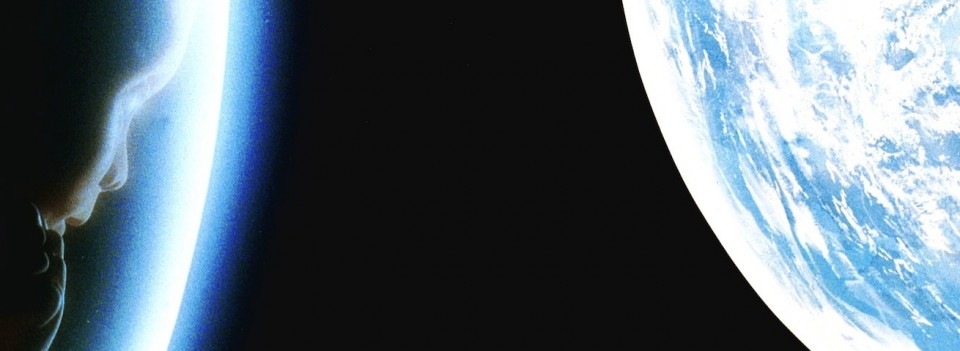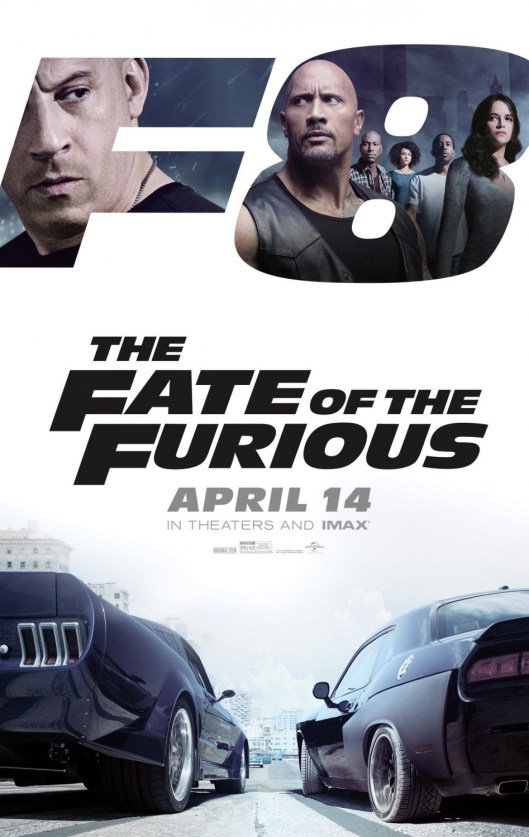Tags
Action, Charlize Theron, Cuba, Drama, Dwayne Johnson, F. Gary Gray, Jason Statham, Kurt Russell, Michelle Rodriguez, Review, Sequel, Thriller, Vin Diesel
aka Fast & Furious 8
D: F. Gary Gray / 136m
Cast: Vin Diesel, Dwayne Johnson, Jason Statham, Michelle Rodriguez, Charlize Theron, Tyrese Gibson, Chris “Ludacris” Bridges, Nathalie Emmanuel, Scott Eastwood, Kurt Russell, Elsa Pataky, Helen Mirren, Kristofer Hivju
And so we come to episode eight in the ongoing Fast and Furious franchise, the series that just keeps on giving and giving… and giving and giving and giving and giving. This is a movie, one of several that we’ll see this year, that will do incredibly well at the international box office, and which will be hugely successful no matter what critics or bloggers or anyone and their auntie says about it. It’s a movie that exists in its own little cinematic bubble, oblivious to movie making trends, advances or developments. If you live in the UK, it’s the equivalent of those Ronseal adverts that state, “It does what it says on the tin”. And if you don’t live in the UK, then try this comparison: it’s like going to McDonalds and ordering a Big Mac, fries and a Coke. You know exactly what you’re getting, and it doesn’t matter if you’ve had that particular combo more times than you can remember, that’s also kind of the point. Here, familiarity breeds expectation, and the makers of the Fast and Furious movies know exactly how to satisfy that expectation.
All the familiar elements are here: exotic locations (Iceland, Cuba, New York?), Diesel being taciturn and glowering a lot (he even shouts a few times, which is new), Johnson looking like a poster boy for steroid abuse, Rodriguez glowering a lot like Diesel, Gibson acting unconscionably stupid, Bridges giving nerds a fairly good name for once, over-the-top action sequences that regularly and deliberately challenge the laws of physics, and cars, lots of shiny, sleek, expensive cars. Relative series newbies Russell, Emmanuel and Statham slot in neatly amidst the rest of the cast, while complete newbies Eastwood (good guy) and Theron (bad guy) add little and a lot respectively. Throw in some old faces from previous entries, and a storyline that’s been built on the back of the last two outings, and you have another patchy, under-developed crowd-pleaser that does enough to keep its audience interested while at the same time giving said audience very very very little that’s new. And it’s the opener for a closing trilogy of movies that will see the franchise come to an end in April 2021.
If there’s anything interesting about the movie, it’s the way in which it harkens back to earlier entries, and tries to incorporate the look and feel of those earlier movies. The opening sequence, set in Cuba, is a throwback to the approach and feel of the first and third movies, with its street-level, underground racing vibe, and beautiful hangers-on to some of the ugliest drivers ever seen on screen. There’s a car up for grabs, a sneering minor villain who thinks he can outwit Dominic Toretto (foolish man!), and some very impressive stunt driving. But it’s a measure of how far the series has come in terms of its tone and style, that this sequence – which starts off well – soon descends into the kind of ridiculous, credibility-free, and excessive action set-piece that the series has become known for. Seeing Toretto winning the race in a stripped-down junker, in reverse, and with the engine on fire no less, serves as an acknowledgement that while the series wants to honour its more scaled-back origins, it’s grown too big and excessive to be able to.
Much has been made of this movie’s main storyline – Toretto betrays his “family” – but as a plot device it’s one of the weaker ideas in the series, and all because we know that there’s no way it’s “for real”. As expected, there’s a reason for his “betrayal”, and while it’s played out with as much sincerity as returning scribe Chris Morgan can instil in his by-the-numbers screenplay, it shows a complete disregard for the character of Letty (Rodriguez) and the trials she’s endured since “dying” in part four (and especially in relation to a scene between Letty and Toretto early on in Cuba). Worse still, the whole thing leads to a scene involving Statham’s returning nemesis Deckard Shaw, and the complete reversal of his character from murderous psychopath to genial funster. It’s as if the makers have seen his performance in Spy (2015) and thought to themselves, how can we exploit this?
Character assassination apart, the movie follows the tried and tested formula of the previous three movies, and never deviates from its cookie-cutter approach. It’s no secret that the franchise thinks up its action sequences first and fits a story and plot around them later, but this time the obvious nature of such a design is even more noticeable than before. An attack on a Russian minister on the streets of New York occurs at the halfway mark, and includes the appropriation by über-villain Cipher (Theron) of any car in the area that has an on-board computer system. Why she has to activate all of them makes no sense, but it does lead to mass collisions and vehicles falling from multi-storey car parks and no end of unconvincing CGI. Far better? The scenes predceeding this where Toretto has to escape Cipher’s surveillance in order to put his own plans into action. Short, simple, and so much more effective.
One thing The Fate of the Furious does get right – finally – is its choice of villain. Stepping out of the shadows no one knew she inhabited, Cipher is played with chilling conviction by Theron, and if as seems likely, she’s going to be the villain for the last two movies as well, then her involvement could be the best thing about them – as it is here. With Statham’s character now reformed, the movie needed someone to be a real villain, and Theron comes through in spades. She’s icy, mad, and bad to the core. Theron shares most of her scenes with Diesel, and every time it’s a no contest: she acts him off the plane Cipher uses, and off the screen as well (which is a shame, as away from all his franchise movies, Pitch Black (2000) excepted, he can be a very good actor indeed).
But what about those action sequences? And what about that submarine smashing through the ice? And all those explosions? Everything we’ve seen in the various trailers? Well, they’re all as slickly produced and homogeneously exciting as those in previous entries, and they’re fine examples of modern day action heroics, but even so they remain curiously thrill-free. A prison riot does Statham and Johnson no favours thanks to having been shot in a jerky, shaky style that makes focusing on the various punches and kicks both actors dish out quite difficult to follow. It’s a sequence that could have benefitted from having a few more bone-crunching sound effects thrown in as well. The submarine sequence is reminiscent of the ending to Furious 6 (2013) (justly famous for its neverending runway), but is surprisingly restrained for all that, while the movie’s biggest explosion – naturally saved for last – also gives rise to the movie’s most ridiculous and risible moment.
But none of this matters. Not Helen Mirren’s awful Cockney accent, not Hivju’s distracting resemblance to a young James Cosmo, not even the sight of Johnson manhandling a torpedo as it races across the ice. The Fate of the Furious can do what it likes and audiences will lap it up regardless. Does this make it a bad movie? On the whole, yes, it does. But for all that, is it entertaining? Weirdly, yes, but in a subdued, stopgap kind of fashion, as if this entry in the series was a bridge between previous episodes and the ones to come, ones that will (hopefully) up the series’ game considerably. After eight movies the franchise has reached a kind of tipping point: the final two outings need to be much stronger and more focused on what they’re trying to do. The series hasn’t quite run out of mileage yet, but it’s running perilously close, and if the makers aren’t careful, the remaining movies will most likely be running on fumes.
Rating: 5/10 – fans will lap this up, but The Fate of the Furious, with its tangled ideas about family and betrayal, doesn’t add up to much, and relies too heavily on its action sequences to prop up its awkward script; the cast have to make do with the same character beats they’ve been given in previous movies, and franchise first-timer Gray isn’t allowed to do anything different with the formula, making this a movie generated and made by committee, and as a result, lacking a distinct identity to make it stand out from the rest of the series.





Perhaps the dumbest entry so far. But still fun. Nice review.
LikeLike